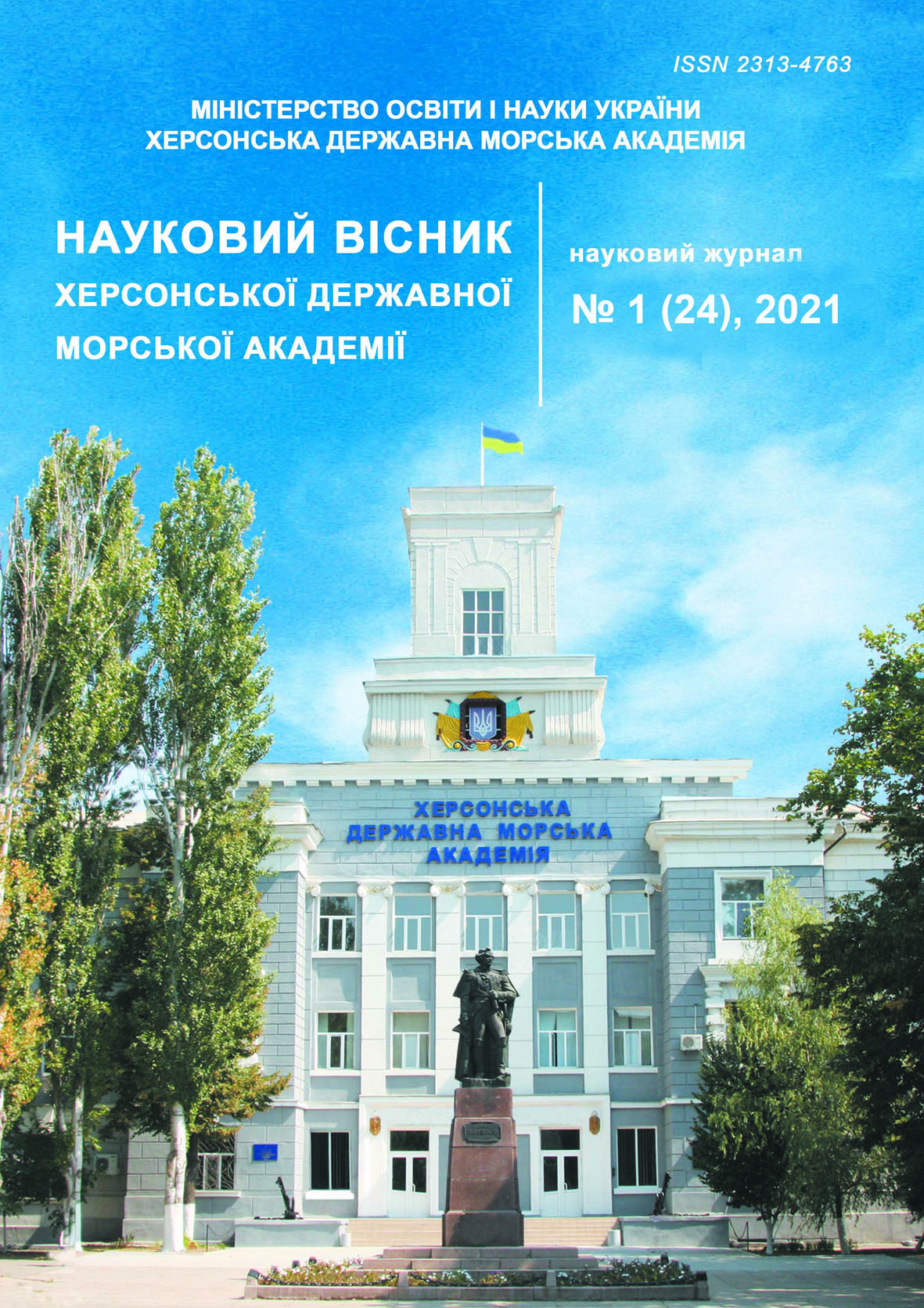ДОСЛІДЖЕННЯ ВПЛИВУ ВМІСТУ МОДИФІКАТОРА 2-БЕНЗОФУРАН-1,3-ДІОН НА АДГЕЗІЙНІ ТА ФІЗИКО-МЕХАНІЧНІ ВЛАСТИВОСТІ ЕПОКСИДНИХ КОМПОЗИТІВ
https://doi.org/10.33815/2313-4763.2021.1.24.118-128
Анотація
У роботі наведено технологічні аспекти модифікації епоксидного олігомера DER-331, що забезпечує високі показники надійності та довговічності розроблених полімерів. Досліджено зміну структури адгезійних і фізико-механічних властивостей композитного матеріалу залежно від вмісту модифікатора фталевого ангідриду (2-бензофуран-1,3-діон). Модифікатор уводили в епоксидний олігомер DER-331 за вмісту – q = 0,10…3,00 мас.ч. Для зшивання епоксидної композиції використовували твердник холодного тверднення триетилентетрамін ТЕТА, температура полімеризації становила Т = 393 ± 2 К. За результатами експериментальних досліджень установлено оптимальний уміст модифікатора 2-бензофуран-1,3-діону в епоксидній матриці з поліпшеними адгезійними властивостями, який складає q = 0,10 мас.ч. на 100 мас.ч. олігомера DER-331. Водночас адгезійна міцність при відриві становить σа = 40,0 МПа, а залишкові напруження – σз = 1,1 МПа. Підвищення адгезійних характеристик пов’язано із активацією сегментів
макромолекул епоксидного олігомера до взаємодії з С=О групами модифікатора, що на початковому етапі під час фізико-хімічного зшивання забезпечує впорядкованість структури полімеру. Досліджено вплив вмісту модифікатора на значення руйнівних напружень при згинанні (σзг), модуля пружності при згинанні (Е) та ударної в’язкості (W). Показано, що значення руйнівних напружень суттєво залежать від вмісту модифікатора в епоксидному зв’язувачі. Введення незначного вмісту модифікатора до q = 0,10…0,50 мас.ч. у епоксидний зв’язувач забезпечує формування полімерних матеріалів з наступними властивостями: руйнівні напруження при згинанні σзг = 92,8 МПа, модуль пружності при згинанні – Е = 3,35 ГПа, ударна в’язкість – W = 17,5 кДж/м2. Підвищення показників механічної міцності пов’язано із частковою пластифікувальною дією модифікатора, що забезпечує підвищену рухливість і деформацію макроланцюгів епоксидного оліґомера і дозволяє рівномірно розподіляти ударне навантаження по об’єму полімеру.
Посилання
2. Elmore J. D., Kincaid D. S., Komar P. C., Nielsen J. E. (2002). Waterborne epoxy protective coatings for metal. Journal of Coatings Technology, 74 (8), 63–72. DOI:10.1007/bf02697969.
3. Kausar A. (2020). Performance of corrosion protective epoxy blend-based nanocomposite coatings : a review. Polymer-Plastics Technology and Materials. 2020. 59 (6). P 658–673. DOI: 10.1080/25740881.2019.1673410.
4. Mochalova E. N., Limarenko N. A., Galikhanov M. F. & Deberdeev R. Y. (2016). Effect of the amount of curing agent, curing temperature, and polarization on physicomechanical characteristics of epoxyamine adhesive compositions based on DER-331 oligomer. Polymer Science Series D, Vol. 9 (4), 396–401. DOI:10.1134/s1995421216040122.
5. Odarczenko M., Thakare D., Li W., Yang K., Tang S., Venkateswaran S. P. & White S. R. (2018). Self-Protecting Epoxy Coatings with Anticorrosion Microcapsules. ACS Omega, 3(10), 14157–14164. DOI:10.1021/acsomega.8b01950.
6. Sapronov O., Maruschak P., Sotsenko V., Buketova N., De Deus A. B. D. G., Sapronova A. & Prentkovskis O. (2020). Development and Use of New Polymer Adhesives for the Restoration of Marine Equipment Units. Journal of Marine Science and Engineering, Vol. 8 (7), 527. DOI:10.3390/jmse8070527.
7. Stukhlyak D. P., Yakushchenko S. V. (2018). Influence of nanoparticles on the physical and mechanical properties of modified epoxy-composite coatings. Journal of Hydrocarbon Power Engineering, Vol. 5, 1, 14–21.
8. Buketov A. V., Kulinich V. H., Smetankin S. A., Buketova N. M. & Yatsiuk V. M. (2019). Vplyv modyfikatoriv C13H12CL2N2TA C13H14N2 na mekhanichni vlastyvosti epoksydnoi matrytsi. Naukovi notatky, 66, 37–45.
9. Elbakieva A. V., Tregubenko M. V., Kostromina N. V. & Ivashkina V. N. (2018). Svoyjstva ehpoksidnihkh svyazuyuthikh, modificirovannihkh polivinilformaljehtilalem. Uspekhi v khimii i khimicheskoyj tekhnologii : sb. naukovihkh trudov, 32,6, 202. Moskva.
10. Zakharov N. M., Alushkina T. V. (2002). Optimizaciya sostava zathitnihkh pokrihtiyj na osnove ehpoksidnihkh smol. Neftegazovoe delo : ehlektronnihyj nauchnihyj zhurnal. Retrived from http://ogbus.ru/files/ogbus/authors/Zakharov/zak_2.pdf
11. Smetankin S. O., Nihalatii V. D., Buketov A. V., Sharko O. V., Skyrdenko O. I. & Bahliuk H. A. (2016). Rozrobka modyfikovanykh polimernykh kompozytiv dlia remontu detalei enerhetychnykh ustanovok transportnykh system. Naukovyi visnyk Khersonskoi derzhavnoi morskoi akademii, 1 (14), 252–261.
12. Khodakovskyi O. V, Amelin M. Yu., Buketova N. M., Sapronov O. O. & Yatsiuk V. M. (2017). Doslidzhennia fizyko-mekhanichnykh vlastyvostei modyfikovanykh paraaminoazobenzolom epoksydnykh kompozytiv dlia remontu zasobiv transportu. Naukovyi visnyk Khersonskoi derzhavnoi morskoi akademii, 1 (16), 113–120.






